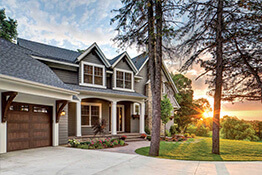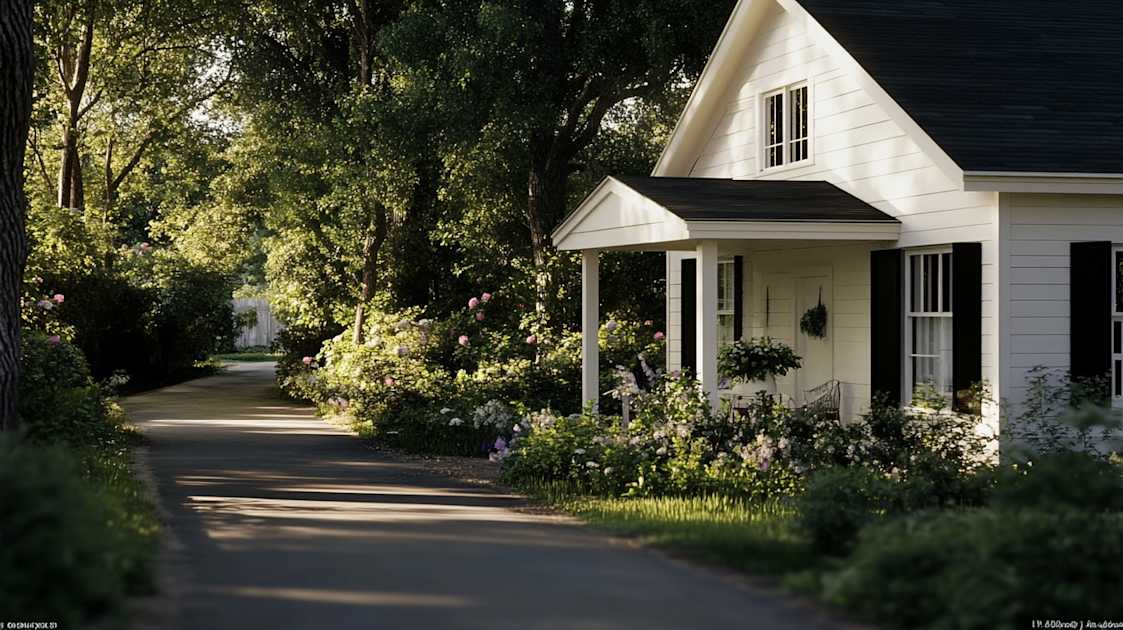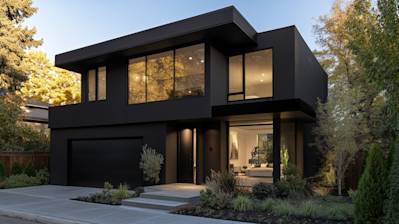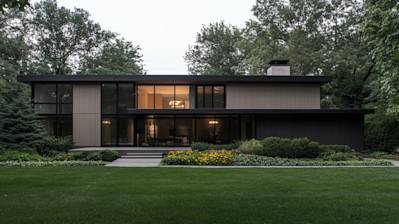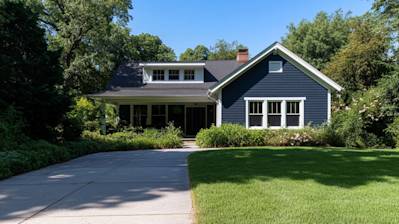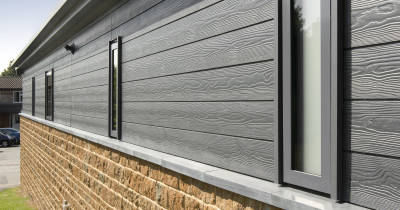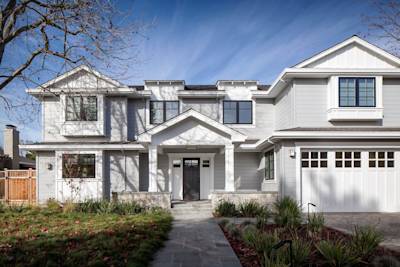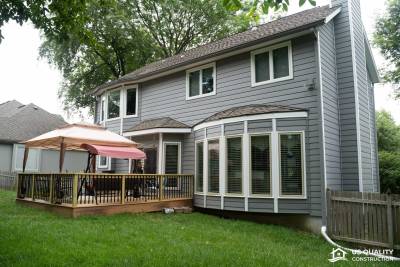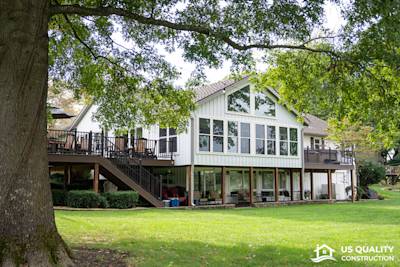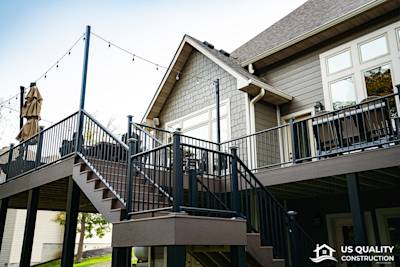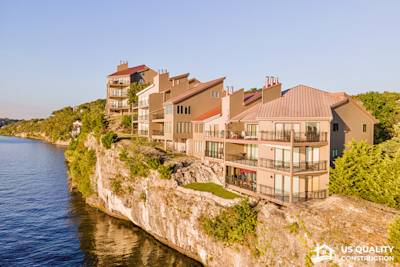Lap siding, otherwise referred to as clapboard or beveled wood siding, is a popular choice for many homeowners. With a broad range of materials, colors, and styles available, it's obvious why this type of siding has become a prevalent option in architecture. This article delves deeply into the topic of lap siding: how it is installed, the materials used, its maintenance, and much more.
Understanding Lap Siding
Lap siding is characterized by long, even planks of wood, vinyl, or fiber cement, installed in a way that each plank overlaps the one below. This overlap creates a seal that protects the structure of the house from rain, snow, sun, and wind.
The profile of lap siding can vary extensively, ranging from sleek and modern to rustic and traditional. This versatility is one of the many appealing factors that have positioned lap siding as a favorite for homeowners and contractors alike.
Different Types of Lap Siding Material
- Wood Lap Siding: Traditionally, wood has been the most popular material for lap siding. It adds a distinctly classic look, is highly durable, and comes in a variety of species like cedar, pine, and spruce.
- Vinyl Lap Siding: Vinyl lap siding is an affordable, low-maintenance alternative that emulates the look of wood. Its durability and ease of installation make it a choice option for many homeowners.
- Fiber Cement Lap Siding: Fiber cement lap siding is a synthetic material that provides stellar performance against harsh weather conditions, with an appearance similar to traditional wood siding.
The Installation Process of Lap Siding
The installation of lap siding begins with the application of a waterproof barrier on the wall surface, followed by the installation of the first plank at the bottom.
Subsequent planks are then overlapped over each other, using nails hammered along the top edge of each plank. This process continues until the siding is entirely installed.
A professional siding contractor can ensure your lap siding is installed with precision and care, guaranteeing optimal weather protection and a pleasing aesthetic appeal.
The Versatility of Lap Siding Designs
One of the major benefits of lap siding is the range of styles available. Whether you're aiming for a traditional, rustic, or modern facade, there is a lap siding design for you.
Here are some options:
- Dutch Lap Siding: The distinctive curvy shape of Dutch lap siding gives your home a unique and traditional design.
- Ship Lap Siding: A favorite among many homeowners, ship lap siding offers a rustic design perfect for farmhouses.
- Beveled Lap Siding: Beveled lap siding introduces a robust profile to a home’s exterior, shaping a façade that evokes strength and solidity.
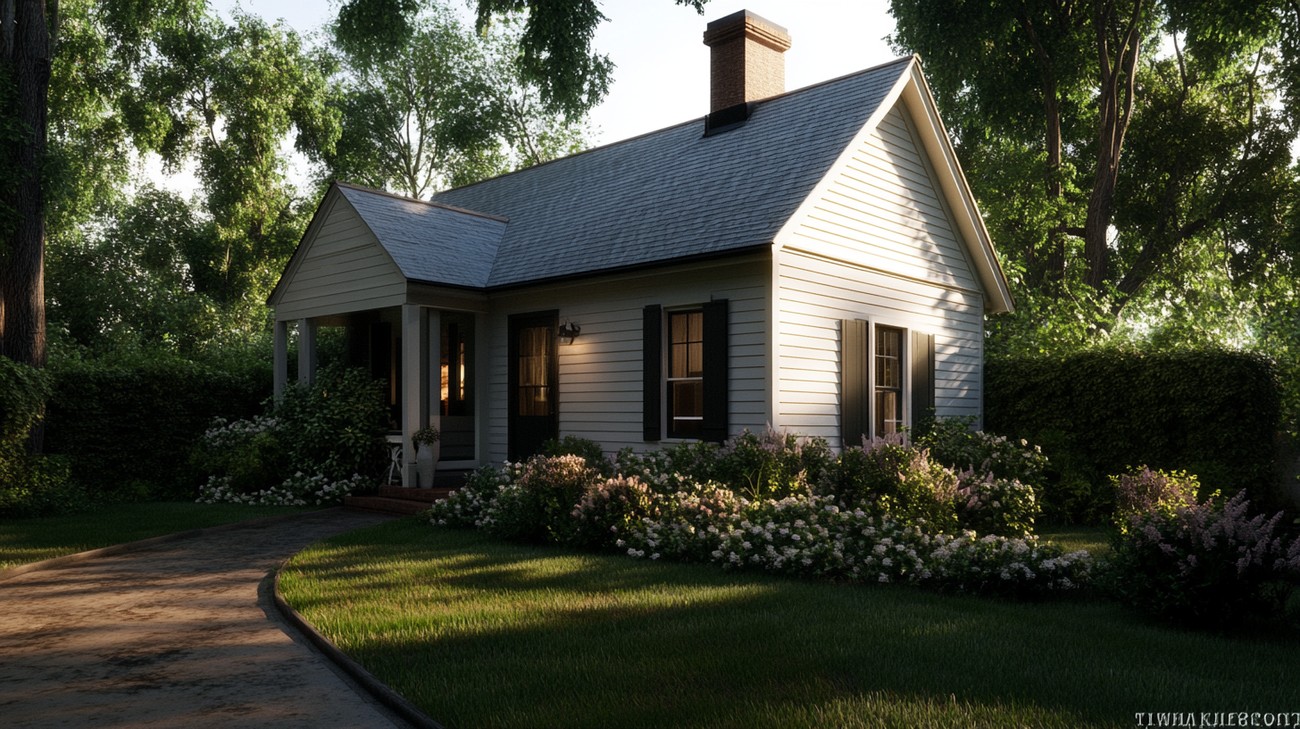
Frequently Asked Questions about Lap Siding
Can I Install Lap Siding Myself?
While it's possible to install lap siding yourself, it's usually advisable to hire a professional. Lap siding requires precision and the right tools to install properly. Mistakes can lead to issues like leaks, drafts, and damage to the siding. A professional can ensure a proper, secure installation, saving you time and potential repair costs.
How is Lap Siding Maintained?
Lap siding maintenance depends on the type of material used. Wood lap siding requires regular staining or painting to prevent weather damage and rot. Vinyl and fiber cement lap sidings typically only require occasional washing to keep them looking fresh. Engineered wood and metal lap sidings will also require regular inspections and maintenance to ensure there's no damage or wear and tear.
How Long Does Lap Siding Last?
The longevity of lap siding significantly varies depending on the material used and how well it's maintained. Composite and fiber-cement lap siding can last up to 50 years or more. Vinyl lap siding can last around 40 years, while wood lap siding can last around 20-40 years, provided it is well-maintained. Metal lap siding often lasts between 40-60 years.
How Much Does Lap Siding Cost?
The cost of lap siding varies greatly depending on the material and labor costs in your area. Wood lap siding is typically the most expensive option, while vinyl is often the most affordable. It's important to consider not just the initial cost, but the long-term costs including maintenance and potential repair costs.
What's the Difference between Lap Siding and Clapboard?
Lap siding and clapboard are similar in many ways and the terms are often used interchangeably. The main difference can be in how they are installed. Lap siding overlaps the piece beneath it, while clapboard often lays flush against the side of the building.
Is Lap Siding Energy Efficient?
Lap siding can offer good insulation, depending on the material used and the quality of the installation. Fiber cement and vinyl lap sidings are particularly good for energy efficiency as they provide excellent thermal insulation.
Can I Paint Lap Siding?
Most types of lap siding can be painted, although the process and results can vary depending on the material. Wood lap siding can be painted relatively easily, while vinyl and metal types may require specific types of paint and a more complex process. Always consult with a professional if you're unsure.

Pros of Lap Siding
Easy Installation
Single Panel Advantages
Lap siding, specifically single panel types, is relatively easy to install. The process of installation is straight forward, even for individuals who might not possess a great deal of expertise or know-how. The simple, lightweight design makes them relatively easy to handle, while they can be installed with basic woodworking tools.
Horizontal and Vertical Installation
Lap siding can be installed in both horizontal and vertical format, offering flexibility dependent on the aesthetic preferences or needs of the individual.
Variety of Colors and Finishes
Color Options
No matter your design vision, lap siding likely has a color that can match. From neutral, earthy tones to more vibrant, striking colors, the variety ensures that virtually any stylistic vision can be realized.
Finishes
Lap siding also allows for customization in the finish. Choices range from smooth, glossy finishes to textured, rustic looks. This contributes to the versatility of the product.
Durable and Sustainable
Durability
This type of siding is known for its durability. It can withstand tough weather conditions, be it harsh sun or heavy rain, without being damaged or worn down. This helps to maintain the improved aesthetic of the property for a longer time.
Sustainability
Lap siding is sustainable to a large extent. Often, it is made from renewable sources like wood, which makes it an eco-friendly choice. Unlike other siding options, lap siding does not contain any hazardous materials.
Cons of Lap Siding
Maintenance
Weight of Maintenance
While lap siding is generally durable, it requires proper maintenance to maintain its aesthetic appeal. Fading color or damaged siding needs to be repainted or replaced to keep the property looking its best.
Specific Cleaning Products
Certain types of lap siding require specific cleaning products. For instance, if your siding is painted, you will need a cleaning product that will not eat at the paint or damage the underlying wood.
Cost
Initial Cost
Lap siding can generally be more expensive than other types of siding, particularly in terms of upfront costs. This is especially true for higher-end materials such as hardwood.
Long-Term Cost
The cost of lap siding does not end with its purchase and installation. As aforementioned, the product may require periodic maintenance. The cost of these maintenance items, including cleaning solutions and painting supplies, can add up over time.
Limitations in Design
Repetitive
While lap siding provides some range of colors and finishes, the design it provides is inherently repetitive and might come across as boring for some tastes. This can limit the creativity and uniqueness of your home's exterior design.
Vulnerable to Pests
Pests
Lap siding, especially when made of wood, is vulnerable to pest infestation such as termites and carpenter ants. Regular inspections are required to prevent this, representing another maintenance task.
Potential Moisture Problems
Moisture Absorption
In damp climates, lap siding can potentially absorb moisture, leading to problems like mold, rot, and swelling. Though not a concern in drier regions, homeowners in regions with higher precipitation need to be aware of this potential issue.

Myths and Misconceptions About Lap Siding
Lap siding, also known as clapboard siding, is a popular choice for exterior home cladding due to its horizontal layout and natural ability to shed water. However, like most products and accents in home construction, there are several myths and misconceptions surrounding its use, material, lifestyle benefits, and maintenance. This breakdown aims to dispel some of that misinformation.
Myth 1: Lap Siding is Only Made of Wood
The Real Deal: Variety of Material Choices
Traditionally, the first lap siding was made from thin, tapered pieces of wood. This has led to the common misconception that all lap siding is wooden. Today, however, lap siding comes in a variety of materials including vinyl, fiber cement, aluminum, and yes, wood. Each material offers its own unique benefits in terms of durability, maintenance, cost and aesthetic appeal.
Myth 2: Lap Siding Cannot Withstand Severe Weather
The Truth: Strong Resistance to Weather Elements
Many people mistakenly believe that lap siding is not durable and won't withstand harsh weather conditions. In reality, different materials of lap siding have different levels of resistance to weather elements. For instance, vinyl lap siding has great wind resistance; it can withstand wind speeds of up to 110 mph. Fiber cement lap siding, on the other hand, is valued for its fire and termite resistance. Consumers can choose their lap siding based on the weather conditions prevalent in their geographic location.
Myth 3: Lap Siding is High-Maintenance
Reality Check: Maintenance Varies by Material
While some may view lap siding as a high-maintenance option, this isn't totally accurate. The level of maintenance required largely depends on the material of the siding. Wood lap siding, for example, needs regular painting or staining to prevent warping, rotting, and insect damage. Conversely, vinyl lap siding is low-maintenance, only necessitating an occasional wash to keep it looking new. Fiber cement siding simply needs to be repainted every 12-15 years.
Myth 4: Lap Siding is Outdated or Old-Fashioned
Current Trend: Classic yet Modern Appeal
The myth that lap siding is an antiquated style couldn’t be further from the truth. It’s versatility and classic profile has a timeless appeal that fits into a wide range of architectural styles - from Victorian to contemporary. Modern materials also have allowed for innovations in color, texture, and design, opening up a world of creative possibilities to make a home's exterior truly unique.
Myth 5: Lap Siding is Expensive
Cost Factor: Variety Reduces Costs
There's a common misbelief that lap siding is an expensive exterior cladding option. The truth is that the price varies based on the material, with vinyl being the generally the most affordable, then aluminum, with wood and fiber cement being more of an investment. When considering costs, it's also worth considering the siding’s lifespan and maintenance costs. An upfront cost may seem high, but if the siding lasts long and requires little maintenance, it could end up being an economical choice.
Myth 6: Lap Siding Reduces the Value of a Home
Resale Factor: Curb Appeal and Durability Boosts Value
Some homeowners worry that choosing lap siding will decrease their house's value. In fact, good-quality, well-maintained lap siding can enhance a home's curb appeal, particularly when the style suits the home's architecture. It’s a wise investment that can even increase home resale value, since newer siding generally offers better insulating properties and damage resistance, features that prospective homebuyers often seek.
Clearing these misconceptions provides better insight into the advantages of lap siding and can help homeowners make more informed decisions about selecting this material for their homes. Offering a blend of classic beauty and modern practicality, lap siding remains a strong contender in the realm of exterior home cladding options.
Summary
So, now that we've talked about lap siding, maybe you're thinking about giving your house a facelift. This is definitely an option to consider. Beyond just its chic and traditional appearance, the longevity and durability of lap siding is something that really sets it apart. Just having that peace of mind, knowing your home's exterior is protected by something as strong and reliable is worth it. Also, you can always spice it up by painting your lap siding any color you want!
Another key point about lap siding is the insulation it offers. This could do your energy bill some good by reducing the amount you're spending on heating and cooling. After all, we could all use a little help in that department. The overlapping design of lap siding not only adds depth to the look of your home, but its also purposeful. It helps keep out moisture, winds, and extremes of both hot and cold weather.
Finally, let's not forget about how easy lap siding is to install. It can either be done professionally or even as a DIY project if you're feeling up for it! And once it's in place, it's very low maintenance. Only occasional washing is needed to keep it looking great. All these benefits make lap siding the practical choice for any homeowner looking to upgrade their home's exterior. For those wanting to increase the value and curb appeal of their home, or those just wanting that great traditional look, lap siding is definitely a prime candidate.
About US Quality Construction
US Quality Construction is a Kansas City, MO's pride! We are your local go-to construction company that's solidly built on values of integrity, dedication, and excellent workmanship. The brick and mortar of our construction business have been around for several years, cementing our reputation as the trusted leader in the industry. From residential to commercial projects, our talented team strives to go above and beyond to meet our clients' diverse needs. We're not just building structures, but we're dedicated to crafting communities. Come be a part of the US Quality Construction family!
Tags: house siding, exterior design, wood paneling,
